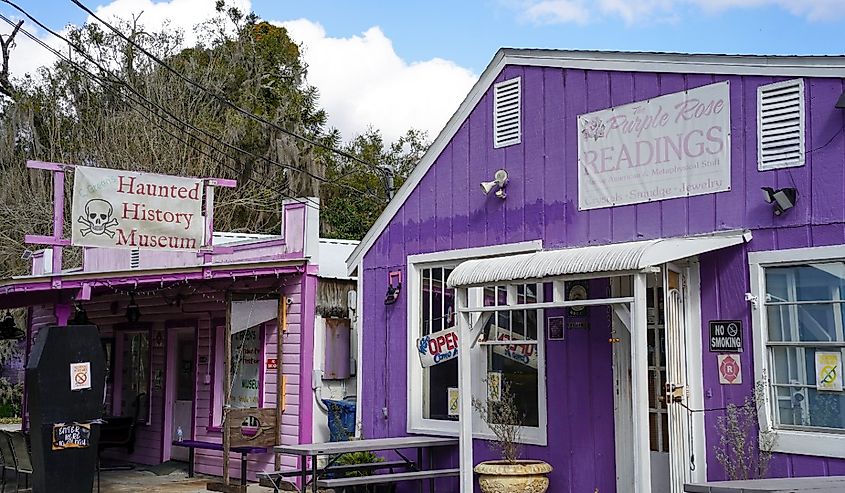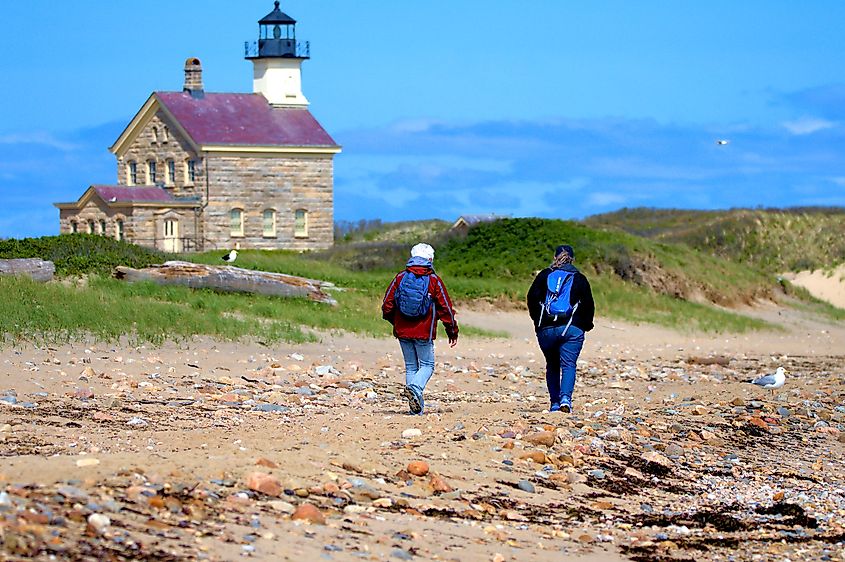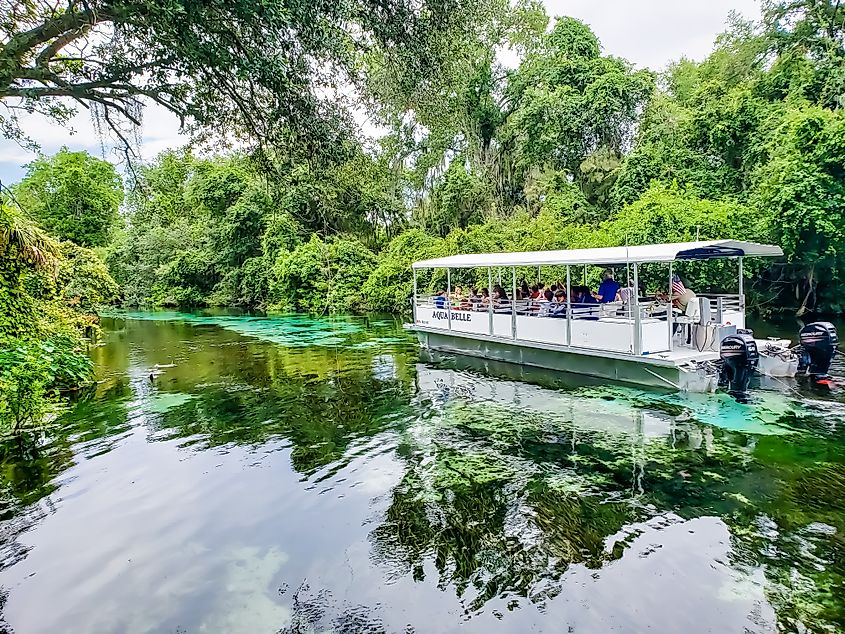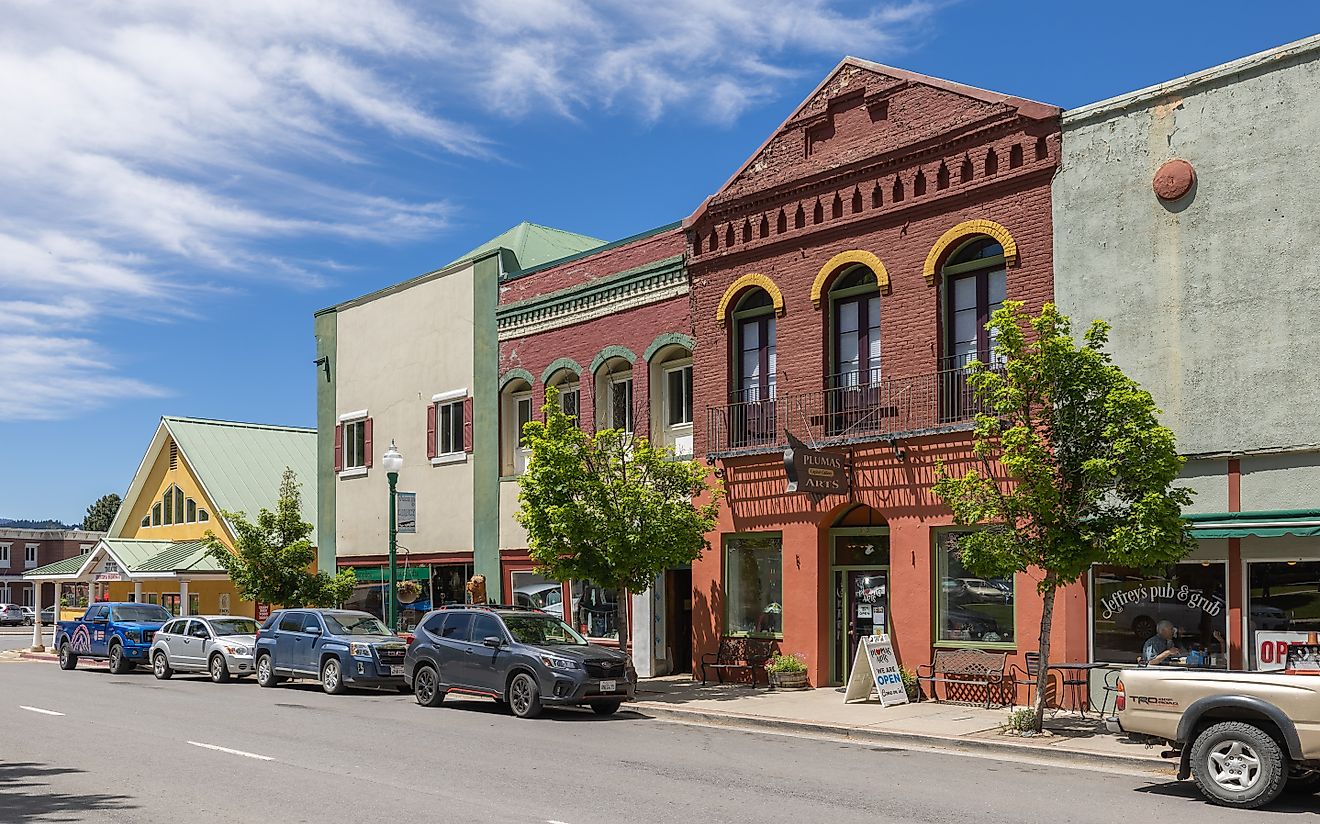
7 Quirkiest Atlantic Coast Towns You Didn't Know Existed
Along the Eastern Seaboard, the Atlantic Coast held the distinction of being the United States’ only coastline for some years after independence. This early exposure to transatlantic trade shaped the coast into a corridor of constant motion amid shifting tides. As infrastructure improved, the Atlantic states began constructing storm-worn boardwalks, preserving maritime forests, and inhabiting riverfront hamlets, where salt air, folklore, and weathered tradition meet.
From the birth of aviation in North Carolina to the cryptic séances of Cassadaga in Florida, the towns edging the Atlantic Ocean drift between historical landmarks and local oddity. Some preserve the history of the early ironworks era, others center on moonlit legends or peculiar speech patterns decipherable only by linguists. But all keep the ocean close, the Atlantic safeguarding their traits and quirks, and its beaches boosting the economy and enticing tourists. These quirky towns on the Atlantic Coast remain tied to movement, memory, and mystery, with communities that refuse to let their stories vanish into the surf.
Cassadaga, Florida

Cassadaga is an unincorporated community in the Sunshine State with a history rooted in spiritualism, where mediums read fortunes and hold séances. Since its founding days in 1875 to this day, many psychics and mediums have congregated in Cassadaga’s streets, earning it the title of the "Psychic Capital of the World." The Southern Cassadaga Spiritualist Camp Historic District is the town's crown jewel, where people come to experience the surreal surroundings. The camp now includes Colby Memorial Temple for church services and a healing center for the believers.
More skeptical tourists can check in at the Cassadaga Hotel and flip through manuscripts in the local library and bookstore to enlighten themselves. Moreover, Lake Marcy and Lake Colby’s vivid views, the latter seen via Colby-Alderman Park, are recreational spots that neutralize Cassadaga’s enigmatic quirks. Horseshoe Park and Fairy Trail is another area that adds a different shade of fantastical allure with its miniature gardens and whimsical fairy houses.
Kitty Hawk, North Carolina

Part of the Outer Banks island chain, Kitty Hawk is a peninsular town that witnessed one of history’s most significant inventions up close. Just four miles south in Kill Devil Hills, the Wright Brothers oversaw the first controlled airplane flight in 1903. After the successful trial, the pair arrived in Kitty Hawk to share the news with their father. The town’s yearly event, Kitty Hawk Kites, showcases this heritage with enormous kites that reach up to 100 feet, filling the sky with vivid colors.
Facing the Atlantic Ocean and Albemarle Sound on either side of Bodie Island, Kitty Hawk draws visitors with activities such as windsurfing and rafting on calm waters alongside numerous beaches. Its connection to the water shapes much of its character, often attracting more attention than its aviation history. Plenty awaits those who explore on foot, from hiking thousands of acres of maritime forest at Kitty Hawk Woods Coastal Reserve to visiting the Wright Brothers National Memorial nearby. Fishing piers, beachside eateries, and seafood spots provide ample options for visitors to stay energized throughout their visit.
Tangier, Virginia

The unusual features of the island of Tangier gain immense attention, including an enigmatic dialect that sparks ongoing studies and speculation. Residents speak a form of Southern American English that often confounds even experts. Theories about its roots vary, from old British influences to other Eastern coastal dialects, contributing to Tangier’s placement on the National Register of Historic Places. This Mid-Atlantic island in Chesapeake Bay also carries the label of the "Soft-Shell Crab Capital of the World," housing one of the last active waterman communities in the Bay.
Just over 400 people live on Tangier, the island cut off from the mainland and surrounded by estuarine waters that many see as threatened by rising seas. The Tangier History Museum provides a sense of continuity, with walking paths along the water that chronicle the backdrop and illustrate its customs. Local dredging and crabbing methods enhance the quality of seafood, while places like Lorraine’s Seafood Restaurant elevate the flavor. Tangier’s Public Beach, unlike others along the Atlantic, faces west, another unusual trait that leaves its mark on the map.
Jamestown, South Carolina

Jamestown has fewer than 70 residents but attracts attention far beyond its size. One of its defining oddities is the disproportionate number of speeding tickets issued each year, which funds a significant portion of the town’s annual budget. Motorists driving in from Myrtle Beach often find themselves caught off guard by the sudden drop in speed limits near Jamestown’s edge. The trap has become a notorious feature on local roads, reinforcing the town’s reputation as one of the most quietly watchful communities in the Lowcountry.
But traffic enforcement isn’t its only quirk. Each May, Jamestown turns into a celebration ground during the Hell Hole Swamp Festival, named for the surrounding wetlands that once hid moonshiners during Prohibition. The event embraces the town’s odd streak with contests like cocoa-spitting, arm wrestling, and horseshoe pitching, alongside the 10K Hell Hole Gator Trot, where winners take home faux alligator head trophies. Duck races, a greased pig chase, and an open-pit barbecue round out the weekend, transforming this quiet crossroads into a full-on tribute to Southern strangeness.
Moreover, the Francis Marion National Forest, a vast expanse surrounding the region, is home to wildlife and backcountry trails. Just east of town, the Santee River flows at a gentler pace. Canoe sections near Jamestown range between 50 and 100 yards wide, offering smooth paddling through a corridor lined with tupelo, oak, and cypress.
New Shoreham, Rhode Island

Block Island formed during the last Ice Age as part of the Outer Lands, the same glacial buildup that created the Hamptons, Cape Cod, and Nantucket. Unlike its more polished neighbors, the town of New Shoreham carries a wild streak that stands out. It occupies the entire island, running small but never idle. Two lighthouses, North Light and Southeast Light, continue their watch over the coast, standing mighty despite centuries of erosion and harsh weather.
However, the real magic appears in this town's many cultural celebrations. The Fourth of July Parade features themed floats that showcase the community’s unique character. And since 1962, locals have treated a small roadside boulder near Lakeside Drive and Mohegan Trail as a public mural. The Painted Rock, layered in messages and graffiti, gains a fresh look almost weekly when families stop by to leave their mark.
New Shoreham's position off Rhode Island's southern coast connects it to centuries of movement, from the native Niantic people to waves of merchants, farmers, and settlers who followed. Back in the 1600s, the earliest settlers guided cows from their boats onto shore, introducing a hardy and elusive feral breed to the landscape. Modern aquaculture projects continue offshore, sharing space with wind turbines that rise against the sky. Finally, New Shoreham has also witnessed its share of unusual and unfortunate incidents over the years. Dozens of vessels have run aground here, and numerous planes have failed to land safely.
Batsto Village, New Jersey

Batsto Village sits deep in New Jersey’s Wharton State Forest, where pine barrens stretch across the Atlantic coastal plain, and wooded trails lead into a preserved 19th-century industrial town. It began with Batsto Iron Works in the mid-1700s, forging household goods and munitions for the American Revolutionary War and Continental Army. Over the decades, the village shifted into glassmaking, farming, and other trades, building a self-reliant community with strong ties to early American industry. To the east, Crowley Landing offers another place to explore. Set along the Mullica River, it includes a boat ramp and barbecue grills, making it a quiet stop for visitors who want to rest, picnic, or launch into the surrounding waterways.
The place holds clear historical weight. The Batsto Village Mansion stands with its slate roof, ornamental windows, and Italianate towers. Nearby, the gristmill, post office, and carriage house spread across gravel roads that trace the Batsto River, where tea-colored water mirrors the forest canopy. Each year, Batsto hosts the Country Living Fair, a large celebration of Pineland culture and natural history. Visitors move through live craft demonstrations, antique exhibits, and performances of traditional music that bring the region’s heritage into the present. Inside the visitor building, faded documents, hand-drawn blueprints, and land records preserve the stories of those who built and worked the land.
Weeki Wachee, Florida

Weeki Wachee, a Seminole word meaning “Little Spring” or “Winding River,” is an unincorporated community known for its unique connection to underwater acts, particularly its mermaid shows, where performers wear tails and elaborate costumes. The town’s identity consistently centers on its standout attraction, along with regular manatee sightings in the Weeki Wachee Preserve.
Weeki Wachee Springs State Park serves as the town’s focal point, offering boat rides and paddleboarding that guide visitors through Florida’s aquatic charisma. The grounds also feature a water park, theater performances, and in-water stunts. For diving enthusiasts, the site draws interest with its cave system, which averages 265 feet in freshwater depth and reaches a recorded low point of 407 feet of freshwater, making it the deepest of its kind in the country.
Legends and Landmarks Line the Atlantic Coast
Twelve of the original thirteen colonies, excluding only Pennsylvania, formed along the Atlantic Coast, serving as the United States’ first maritime gateway to the world. While its ferocious tidal waves make the region prone to some of the world's strongest hurricanes, they also give form and rhythm to towns that trace the water’s edge. Some communities, long tied to ports and weather, channel those forces into distinct expressions.
While Kitty Hawk sends giant kites into the sky in tribute to the dawn of flight, performers in Weeki Wachee glide through spring waters in mermaid tails, staging aquatic shows that keep the town’s surreal spirit afloat. From barrier islands that preserve vanishing dialects to forested hamlets built around iron smelting, the Atlantic Coast holds stories still in motion. These towns preserve the eccentricities that make the Atlantic Coast unforgettable, their off-beat cultures, festivals, and rituals echoing the ocean’s heartbeat.











